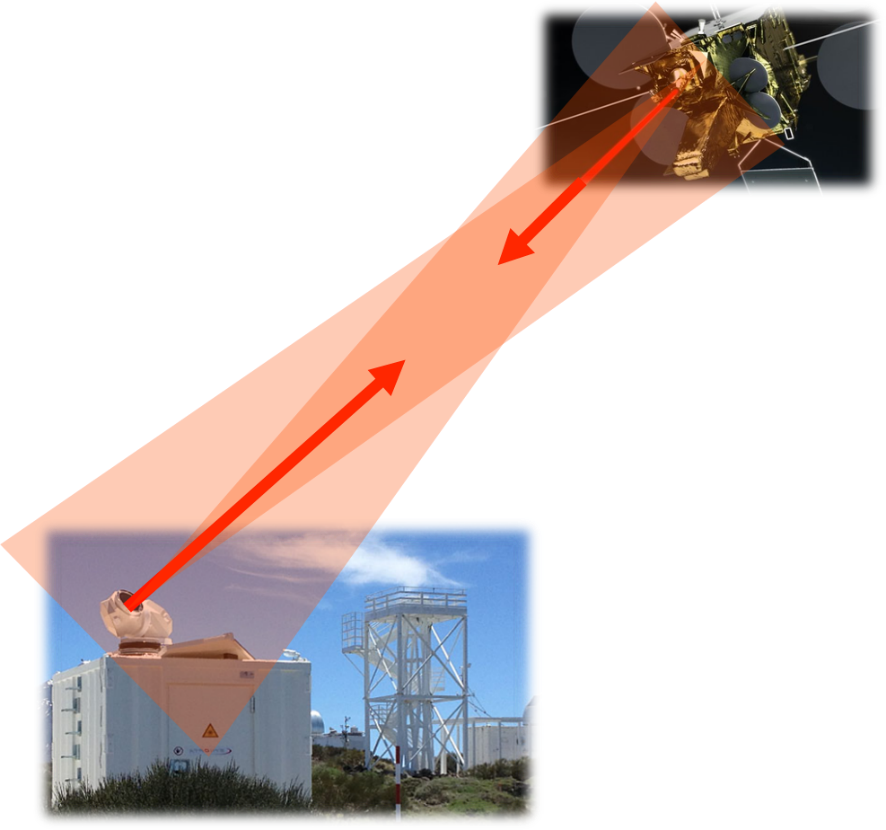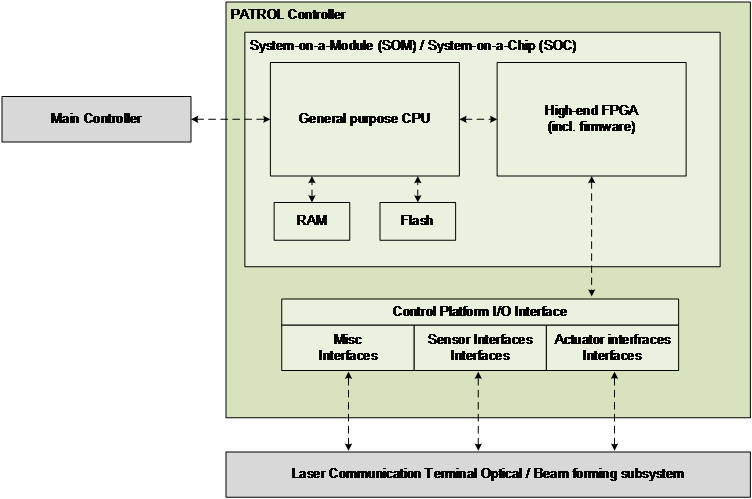
-
StatusCompleted
-
Status date2025-09-12
-
Activity Code6C.004
The PATROL study aims to de-risk the technology required to make a cost effective Laser Communications Terminal (LCT) control electronics subsystem to execute robust Pointing Acquisition and Tracking (PAT) and Adaptive Optics algorithms on a single compact control platform.
The development and verification focus on breadboard activities to mitigate the technical risks identified in the development of the final product.
Laser Terminal System Companies need to establish and maintain a laser link between a satellite and a ground terminal at Tbps range data rates. PAT is affected by noise sources (propagation channel atmospheric noise, mechanical noise, electronics noise …).
The objective of the PAT function is to be sufficiently robust to meet customer service availability requirements. Laser link shall not be lost, even in case of worsening atmospheric conditions and bit-error-rate degradation.
The objective is to create a robust closed loop Optical Ground Terminal (OGT) control system, consisting of fast electronics, optronics (detectors, sensors), functionalities (e.g. windowing, synchronisation, buffering, time stamping…) and a robust algorithm. The electronics are designed to have sufficient resources to accommodate Adaptive Optics processing also needed in high speed OGT.

- Embedded control platforms typically have limited computational resources available for sufficient control bandwidth. This makes implementation of a robust tracking algorithm challenging.
- Embedded control platforms typically have limited Input/Output (I/O) bandwidth available for readout of acquisition and tracking sensors and commanding of tip/tilt actuators. This makes operation at the required control cycle challenging.
- Application in a compact OGS or airborne terminal requires a small-size embedded control platform. Combined with the required computational resources this is challenging.
- PAT function including accommodation of AO processing at higher speed and more robust than alternative products;
- Offer mass and volume smaller than alternative products, to enable use in a wide range of optical ground stations as well as airborne terminals;
- Support a wide range of laser terminal configurations without the need for hardware or firmware re-development, typically not possible with alternative products;
- Upgradable to include more advanced hardware (e.g. Field-Programmable Gate Array (FPGA)) as it becomes available on the market.
- PATROL is a hybrid box consisting of general purpose Central Processing Unit (CPU) and FPGA components for the most time critical parts;
- PATROL implements the PAT functions and includes the AO control functions;
- Control electronics are directly coupled to the electrical I/O section to enable low latency access to sensors and actuators.
- PATROL System-on-a-Chip (SOC): The control platform computational core, a SOC with general purpose CPU and high-end FPGA;
- Control platform I/O section: The control platform electrical interfaces to PAT sensors and actuators;
- Control platform FPGA firmware: FPGA programming for time critical parts of PAT algorithms (i.e. high-frequency closed loop tracking function);
- Control platform software: Software for less time critical parts of PAT, such as state management and scanning path generation. Interfaces to time critical FPGA loop (not shown in figure).

Kick-Off (T0)
Milestone 1: Design Review
- Approve final design;
- Assess adequacy of breadboard; for technology demonstration;
- Review verification test plan.
Milestone 2: Test Readiness Review
- Verify test documentation suitability;
- Verify that tested items are built to the required standard;
- Check correct test configuration;
- Verify acceptability of all non-conformances, waivers and deviations.
Milestone 3: Final Review
- Present summary of outcome of the development phase, including conclusions and recommendations;
- Propose outline of future product development strategies;
- Present data gathered.
The PATROL activity is completed in May 2025.
The main achievements are:
- The design and realisation of a test setup to de-risk technology required for a robust control electronics subsystem for LCT, focusing on PAT algorithms;
- Robustness analysis has been performed and robustness and control platform requirements have been established;
- The design and realisation of a control platform and the verification of the control platform including software using the aforementioned test setup.


